What is good music? Who gets to decide? We do, of course! Just kidding, all we do is chime in. While it’s safe to say that Arnold Schoenberg’s “String Quartet No. 3, Op. 30” (1873) and Ruth Crawford (Seeger)’s “String Quartet” (1931) have been accepted as canonical, it’s also fair to call Spektral Quartet’s renditions exquisite; and for some modern listeners, a revelation. These compositions fill what would under other circumstances be the first of two discs, the difference being that these works are not meant to have a designated batting order. One may approach them from a Cageian perspective, tossing the cards like an I Ching; one may pick and choose; one may even limit the playing time to a suggested 15 to 55 minute session. Their presence on vinyl or disc would be limiting. If Spektral Quartet does have a rule, it is that there are no rules.
So let’s get to that new music! As a member of the Wet Ink Ensemble, Sam Pluta is already an established name, and “binary / momentary logics: flow state / joy state” allows him to show off his playful side. Spektral Quartet apologizes for the fact that there will be “no hit singles” from this album, but why not? And what is a hit single anyway? It’s a hit if we say it is, and this one has Top of the Pops written all over it. Everyone loves dissonance, sudden timbre changes, abrupt strokes of the bow and the vast borderland between electronic and organic. Once one has listened to all the great 19th and 20th century auteurs, Pluta fits right in. And as Brahms has proven, accessibility and simplicity need not be barriers to (eventual) popularity. Looking at the cards, we choose skittering, glitchy and gutsy. Who’s having fun now? We are.
Wow, we would not want to fall off that bookcase. Okay, now back to the music! Anthony Cheung‘s “The Real Book of Fake Tunes” is highlighted by the sublime flautist Claire Chase. These five brief movements, each short enough to be a single (okay, we’ll let it go) continue the sense of experimentalism with humor and verve. The zesty trills and somber strings flirt with one another, suggesting that they are not so easily pigeonholed. Methinks the violin doth protest too much. The lines blur between past and present, an advantage of composition untethered to populist preferences. The music is brash and bold; for an image, we need something confrontational. The giant eye and dark coats of Card #7 fit the bill, although they are tagged Schoenberg. Now we seek a link between the two, not difficult to find, especially between Shoenberg’s fourth movement and Cheung’s third.
Born in 1991, the youngest composer on the set is a testament to the fact that brilliance determines its own schedule. Offering the album’s only vocal piece, Charmaine Lee leads the quartet with trills, pops, growls, gargles, breath and other onomatopoeia, sounding like a cross between Minions, a Coke can and a balloon. The “hi”s at the end are charming. For this, we need a 21st card; why not draw our own? The Quartet “closes” the album with George Lewis‘ “String Quartet 1.5: Experiments in Living,” ostensibly the title piece, although also ~ should one choose to play it first ~ an overture. If sounds had words (and thanks to the smaller cards in the deck, they do!), these notes might correspond to the utterances of Lee, the garbled tragedy of 19th century reviews, or the reactions of your friends, who really, really want you to choose something else to play. That is, until you break out the cards, play the game, compare notes, and establish the case that accessible and inaccessible, popular and unpopular, durable and disposable are all functions of perception. By (literally) shuffling the deck, Spectral Quartet calls the assumptions of listeners to task while providing multiple access points for appreciation.
